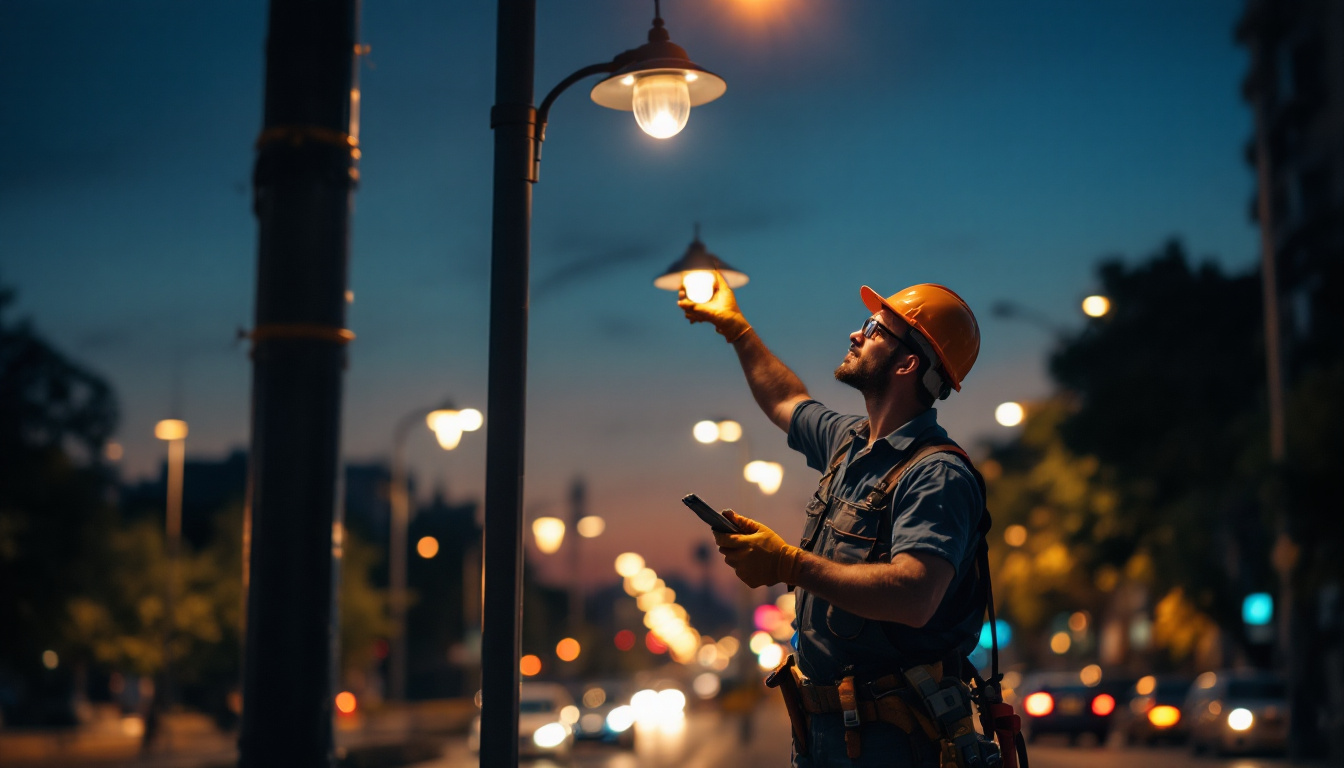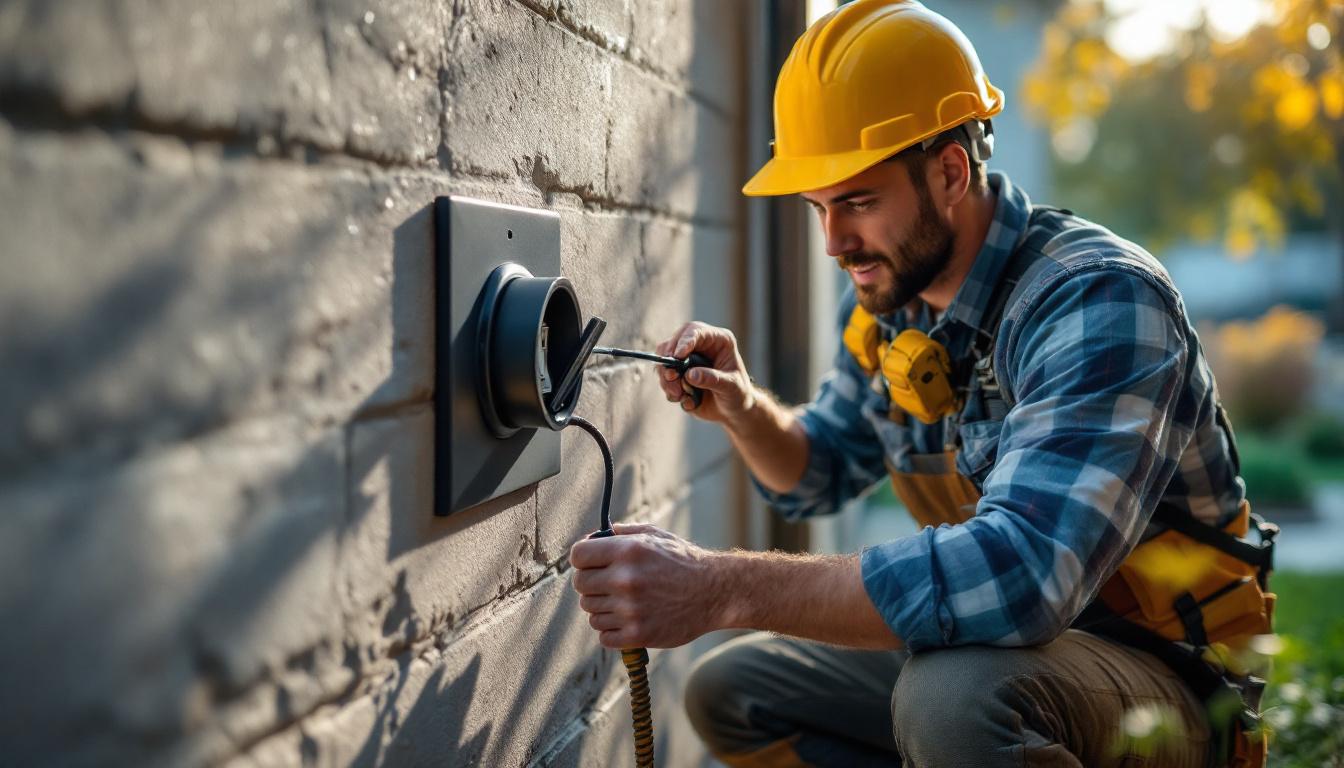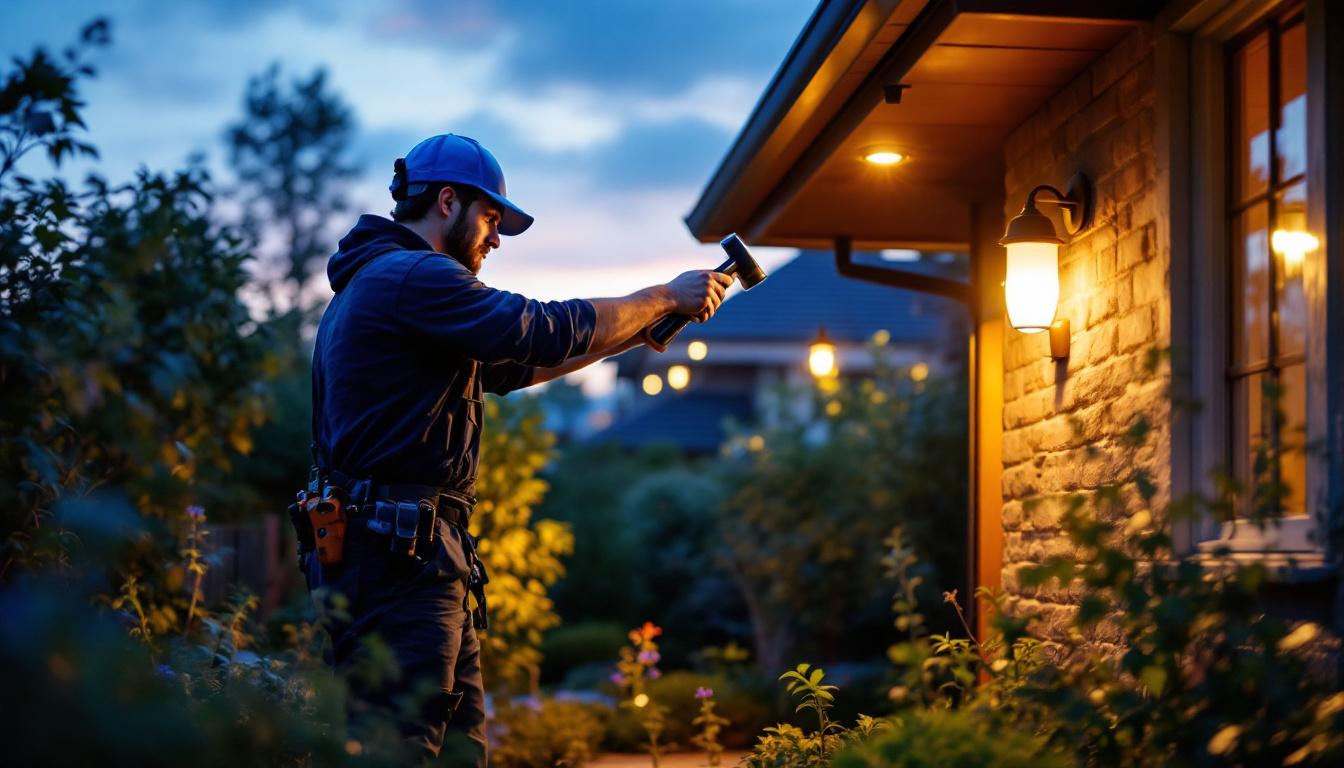

In the realm of urban infrastructure, street lamp poles play a crucial role in ensuring safety and enhancing the aesthetic appeal of public spaces. However, lighting contractors face a myriad of challenges when it comes to the installation and maintenance of these essential fixtures. This article delves into the top challenges that lighting contractors encounter, providing insights and potential solutions to navigate these obstacles effectively.
Street lamp poles are not merely functional; they are integral to urban design and public safety. They illuminate streets, sidewalks, and public spaces, deterring crime and improving visibility for pedestrians and drivers alike. Beyond their functional role, these poles contribute to the overall ambiance of an area, influencing how residents and visitors perceive a neighborhood. The design and placement of street lamp poles can enhance the aesthetic appeal of public spaces, creating a welcoming environment that encourages community interaction and engagement.
As cities evolve and expand, the demand for efficient and aesthetically pleasing street lighting grows. Lighting contractors must be equipped to address the challenges that arise in this dynamic environment, ensuring that installations meet both regulatory standards and community expectations. Moreover, the integration of smart technology into street lighting systems is becoming increasingly common, allowing for adaptive lighting solutions that respond to real-time conditions, such as pedestrian traffic and weather changes. This not only improves energy efficiency but also enhances safety and security in urban areas.
One of the foremost challenges lighting contractors face is navigating the complex landscape of regulations and codes. Each municipality may have different requirements regarding the height, brightness, and placement of street lamp poles. Failure to comply with these regulations can lead to costly fines and project delays. Additionally, contractors must consider environmental regulations that may dictate the use of sustainable materials or energy-efficient lighting options, further complicating the compliance landscape.
To mitigate these challenges, it is essential for contractors to stay informed about local regulations. Engaging with local authorities early in the planning process can help clarify requirements and streamline approvals. Additionally, utilizing software that tracks regulatory changes can be beneficial in maintaining compliance throughout the project lifecycle. Regular training and workshops for contractors on the latest regulations and best practices can also foster a culture of compliance and innovation within the industry, ensuring that projects not only meet but exceed community standards.
Conducting a thorough site assessment is critical before any installation begins. Lighting contractors must evaluate various factors, including existing infrastructure, environmental conditions, and community needs. This assessment not only informs the placement of the poles but also helps in selecting the appropriate lighting technology. Factors such as the surrounding landscape, potential light pollution, and the need for adaptive lighting solutions must all be considered to create an effective lighting plan that serves the community well.
Challenges can arise when unexpected site conditions are encountered, such as underground utilities or poor soil quality. To address these issues, contractors should invest in advanced site analysis tools and techniques. Utilizing ground-penetrating radar can help identify underground obstacles before excavation begins, minimizing delays and additional costs. Furthermore, engaging with community stakeholders during the planning phase can provide valuable insights into local preferences and concerns, leading to a more tailored and effective lighting solution that enhances the overall quality of life in the area.
The materials used in street lamp pole construction significantly impact durability, maintenance, and overall performance. Lighting contractors must carefully consider factors such as corrosion resistance, weight, and aesthetic appeal when selecting materials for their projects.
Common materials include aluminum, steel, and fiberglass, each with its own set of advantages and disadvantages. For instance, while aluminum is lightweight and resistant to corrosion, steel offers greater strength but may require additional protective coatings to prevent rust. Fiberglass, on the other hand, is often overlooked despite its excellent resistance to harsh weather conditions and its ability to be molded into various shapes, allowing for unique designs that can enhance the visual appeal of urban landscapes.
Budget constraints often pose a significant challenge for lighting contractors. The initial cost of materials can be high, and contractors must balance quality with affordability. Investing in high-quality materials may lead to lower maintenance costs and longer lifespans, ultimately providing better value over time.
To navigate these financial challenges, contractors can explore bulk purchasing options or negotiate with suppliers for better rates. Additionally, considering alternative materials that offer similar performance at a lower cost can help manage budgets effectively without compromising quality. It’s also important for contractors to factor in the potential for future upgrades; selecting materials that can accommodate new technologies or design changes can save money in the long run by avoiding complete replacements.
As sustainability becomes a priority in urban planning, lighting contractors must also consider the environmental impact of their projects. The choice of materials, energy sources, and lighting technologies can all contribute to a project’s overall ecological footprint.
Contractors are increasingly turning to LED technology for street lighting, which not only reduces energy consumption but also has a longer lifespan compared to traditional lighting options. Implementing solar-powered street lamps is another way to enhance sustainability, providing a renewable energy source that can significantly reduce operational costs. Furthermore, the use of recycled materials in the construction of lamp poles is gaining traction, as it not only minimizes waste but also supports a circular economy. By prioritizing eco-friendly practices, contractors can contribute to greener urban environments while meeting the growing demand for sustainable infrastructure solutions.
The installation phase of street lamp poles can present various challenges, from logistical issues to technical difficulties. Proper planning and execution are essential to ensure that the installation process runs smoothly and efficiently.
Coordinating the logistics of a street lighting project can be daunting, especially in urban environments where space is limited and traffic is heavy. Contractors must consider the timing of installations to minimize disruptions to the public and ensure the safety of workers and pedestrians.
To address logistical challenges, contractors can develop detailed project timelines and communicate effectively with local authorities and stakeholders. Utilizing traffic management plans can also help mitigate disruptions during the installation process, ensuring that the project remains on schedule.
Installing street lamp poles requires a specific set of skills and technical knowledge. Contractors must be proficient in electrical work, structural integrity assessments, and safety protocols. Inadequate training can lead to installation errors, which may compromise the safety and functionality of the lighting system.
To overcome this challenge, investing in ongoing training and certification for staff is essential. Workshops and training programs can enhance the skills of the workforce, ensuring that they are equipped to handle the complexities of street lighting installations.
Once the street lamp poles are installed, the responsibility shifts to maintenance and upkeep. Regular maintenance is crucial to ensure that the lighting systems remain functional and safe for public use. However, this aspect of the project often poses its own set of challenges.
Conducting routine inspections is vital for identifying potential issues before they escalate. However, scheduling these inspections can be challenging, especially in busy urban environments where access to poles may be restricted.
Implementing a systematic inspection schedule can help streamline this process. Utilizing technology, such as drones or remote monitoring systems, can also enhance inspection efficiency, allowing contractors to identify issues quickly without the need for extensive manual checks.
When maintenance issues arise, timely repairs are essential to minimize disruptions and maintain safety. However, sourcing replacement parts can sometimes be a challenge, particularly if the original manufacturer is no longer in business or if the parts are outdated.
To mitigate these challenges, contractors should establish relationships with multiple suppliers and keep an inventory of commonly used parts. This proactive approach can reduce downtime and ensure that repairs can be conducted swiftly, maintaining the integrity of the lighting system.
Engaging with the community is a critical aspect of any street lighting project. Lighting contractors must consider the needs and preferences of local residents when planning and executing installations. However, gathering and addressing community feedback can present challenges.
Public perception of street lighting can vary widely, with some community members advocating for brighter lights for safety, while others may prefer softer lighting for aesthetic reasons. Balancing these differing opinions can be a complex task for contractors.
To navigate this challenge, contractors should prioritize open communication with the community. Hosting public meetings or surveys can provide valuable insights into community preferences and concerns, allowing contractors to tailor their projects accordingly.
Once feedback is gathered, addressing concerns in a timely and effective manner is crucial. Contractors must be prepared to adapt their plans based on community input, which may require additional time and resources.
Establishing a clear feedback loop can help streamline this process. Providing updates to the community on how their input is being incorporated into the project can foster trust and collaboration, ultimately leading to a more successful outcome.
The challenges faced by lighting contractors in the realm of street lamp pole installation and maintenance are multifaceted. From regulatory compliance and material selection to installation logistics and community engagement, each aspect requires careful consideration and strategic planning.
By understanding these challenges and implementing proactive solutions, lighting contractors can enhance the efficiency and effectiveness of their projects. Ultimately, the goal is to provide safe, reliable, and aesthetically pleasing lighting solutions that meet the needs of urban communities.
As cities continue to grow and evolve, the role of lighting contractors will remain vital in shaping the future of urban infrastructure. Embracing innovation, sustainability, and community collaboration will be key to overcoming the challenges that lie ahead in the field of street lighting.
Ready to tackle the challenges of street lamp pole installation and maintenance with confidence? At LumenWholesale, we support lighting contractors like you with superior, spec-grade lighting products at the best wholesale prices. Say goodbye to local distributor markups and hello to a vast selection of industry-standard lighting solutions that promise reliability and high performance. With free shipping on bulk orders, LumenWholesale is your go-to source for premium lighting without hidden fees or quality compromises. Elevate your urban lighting projects today by visiting Wholesale Lighting at the Best Value and discover how we combine quality, affordability, and convenience to light up your work.

Explore the unique challenges lighting contractors face when dealing with refrigerator lighting.

Discover how waterproof outlet covers are revolutionizing the lighting industry, enhancing safety and efficiency for contractors.

Discover how LED kitchen lighting fixtures can transform your contracting business.

Discover essential tips and expert advice with our comprehensive checklist for lighting contractors.